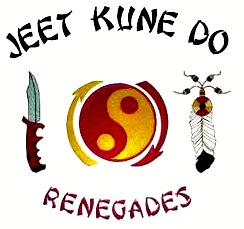
Professor Gary Dill's
Jeet Kune Do Association
Authentic
Training in Bruce Lee's “Style of No Style" as taught
at his Oakland Kwoon (School)
About JKD
Contact the JKD Association
| About Jeet
Kune Do - The Oakland Kwoon |
(picture of Bruce Lee
& James Yimm Lee)
Bruce Lee, arguably the Greatest Martial Artist of the 20th Century, was a young Chinese-American actor, philosopher and an extremely talented and knowledgeable martial artist in the 1960's when he met and became friends with James Yimm Lee, a noted Northern California martial artist. As Bruce realized the Wing Chun Gung-Fu (he used the Cantonese pronunciation vs. the more popular “kung fu”) wasn't working as well as he'd hoped in a fight, he adopted boxing and fencing methodology – making them his own – forming what he'd originally called Jun Fan Gung- Fu (Lee Jun Fan being his Chinese name). As he refined his methods, he realized the advantages of “intercepting” his opponent's actions and energies, ultimately creating what he called Jeet Kune Do, literally translated from Cantonese as “intercepting fist way.”
Refining the techniques in the garage of James Yimm Lee, Bruce used equipment James had built as well as ideas he'd bounced off of James to fine tune the techniques that the Oakland Branch of Jeet Kune Do would become famous for – giving that branch the nickname of the “Jeet Kune Do 'Fighting' School,” known for the realistic combative training the students (including a young Vietnam Veteran named Gary Dill) would experience.
Jeet Kune Do is what Bruce Lee called a “style of no style.” What he meant according to his student (and noted JKD instructor) Gary Dill was that there were no set forms or routines (though there were and are specific techniques) and that rather than add more and more methods to respond to attacks, you “whittled down” until you had only what you needed to intercept... jeet... the attacker's intent before it had the chance to hit you. Jeet Kune Do puts your “weapons” right in front where they'll do the most good, and doesn't let you wait to be attacked. Rather, you intercept before the attack actually gets to you, which meets the main requirement of ALL combatives: don't get hit.